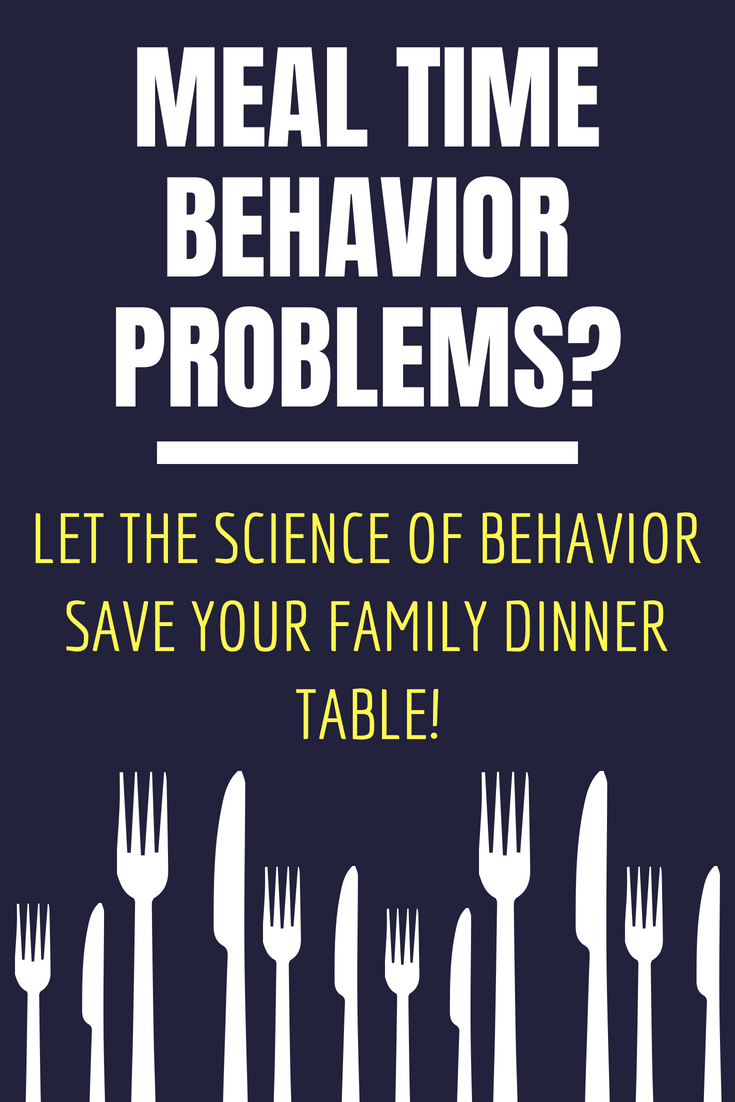 “Dear Behavior BFF, I need some serious help with dinnertime. My two sons argue, yell, goof off, refuse to eat, you name it. We can’t go out to restaurants and turn down any dinner invites from friends. They make dinner a miserable experience for us. Please help!”
“Dear Behavior BFF, I need some serious help with dinnertime. My two sons argue, yell, goof off, refuse to eat, you name it. We can’t go out to restaurants and turn down any dinner invites from friends. They make dinner a miserable experience for us. Please help!”
Mealtimes can be hard. I’ve actually written about it before, geared specifically towards toddlers. There are lots of positive behavior supports you can use to increase desired behaviors at the dinner table. In the interest of not overwhelming you with a barrage of ideas- let’s focus on just one research-based strategy for teaching and increasing desired behaviors: Behavior Skills Training.
What is Behavior Skills Training, or BST? BST is a research-based strategy to teach new skills. It has been defined as “a procedure consisting of instruction, modeling, behavioral rehearsal, and feedback that is used to teach new behaviors or skills” (Miltenberger, 2004). Learn more about BST in a previous bSci21 article here.
There are four steps: (1) instructions; (2) modeling; (3) rehearsal and (4) feedback.
Step 1: Instructions
Tell your sons what the expected behaviors are at dinner time. This is not a lecture, this is just giving instructions. Be clear and concise. Define the desired behaviors in simple, clear terms. Use observable behaviors, not broad adjectives. Prioritize the top ones (maybe 3) or this list could go on and on.
Here’s an example: “At the table, the expected behaviors are: use a medium level voice volume at most, eat the food given to you, and follow directions from parents with no more than 2 reminders.”
Step 2: Modeling
Act out the expected behaviors you just gave during the instructions portion of BST. This means to physically do each one. You can give multiple examples of how to do the desired behaviors. This is not a lecture or a time to talk more about the expected behaviors. It’s a time for your children to watch you engage in the appropriate behaviors. For your specific situation, it would be helpful to not do this during dinnertime. Act it out at a separate time when you will be the only person with a plate of food as part of your act. You don’t want your children to be doing anything else but watching you.
For example: “Do you hear my voice level? This is a medium and I won’t get any louder.” Take bites of food. Make polite conversation with whoever is around. Let your kids give you instructions and follow them with no more than 2 reminders.
Step 3: Rehearsal
It’s time to practice with your sons. Again, I wouldn’t do this at dinnertime, but practice in sessions at other times of the day. It doesn’t have to be a big undertaking, just a few minutes here and there. Take turns being the parent or the child if that increases participation. The key here is that you practice and rehearse until they get it right. Don’t role-play one time and expect dinner to be miraculously smooth that evening. Practice, practice, practice.
Step 4: Feedback
Giving specific feedback once the skills are being practiced in the real world (aka at dinnertime and not during practice sessions) helps to teach and maintain new schools. This doesn’t just mean corrective feedback. Instead of spending your time nagging about the desired behaviors, focus on giving praise and attention for all the appropriate behaviors your children do engage in. When needed, give corrective feedback with instructions. Don’t make it a criticism or a punishment. Just tell them the desired behavior you are looking for and how to get there.
Here are a few examples:
“That was such a funny story! Thank you for using a nice voice volume. You are hilarious!”
“Wow, you ate all your dinner! Should we have some extra free time before bed to celebrate?”
“Your voice is starting to get too loud. I’d love to talk with you about your day or tell jokes as long as you keep your volume at a medium level.”
The rehearsal/ role-play step can feel pretty silly for adults, especially the first time. But practicing until you get it right can teach new skills efficiently. And if you take turns acting out different parts of the scenario, it often turns into an enjoyable activity with plenty of giggles!
Don’t just take my word for it. Learn more about BST with the resources below – it’s a powerful tool that is easy to implement and can be applied to all kinds of situations and new behaviors to be taught!
Gianoumis, S., Seiverling, L., & Sturmey, P. (2012). The effects of behavior skills training on correct teacher implementation of natural language paradigm teaching skills and child behavior. Behavioral Interventions, 27(2), 57-74.
Miles, N. I., & Wilder, D. A. (2009). The effects of behavioral skills training on caregiver implementation of guided compliance. Journal of Applied Behavior Analysis, 42(2), 405-410.
Miltenberger, R. (2004). Behaviour Modification: principles and procedure (3rd ed.) Belmont, CA. Wadsworth Publishing.
Miltenberger, R. G., Flessner, C., Gatheridge, B., Johnson, B., Satterlund, M., & Egemo, K. (2004). Evaluation of behavioral skills training to prevent gun play in children. Journal of Applied Behavior Analysis, 37(4), 513-516.
Reid, D. H. (2012). Supervisor’s Guidebook: Evidence-based Strategies for Promoting Work Quality and Enjoyment Among Human Service Staff. Habilitative Managment Consultants.
Ward‐Horner, J., & Sturmey, P. (2012). Component analysis of behavior skills training in functional analysis. Behavioral Interventions, 27(2), 75-92.
This article by Leanne Page, MEd, BCBA was originally published at bSci21.org.


Recent Comments